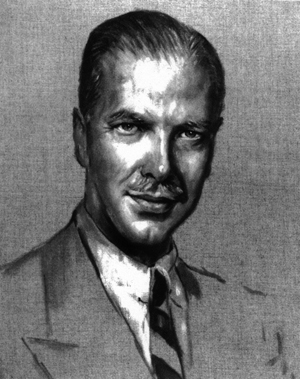1979: City’s largest office rehab project put at risk over tax break

J. Clydesdale CushmanThe largest rehabilitation project for a Manhattan office building — a $90 million renovation — was thrown into jeopardy 32 years ago this month when the developer nearly lost a multimillion-dollar tax break.
The city’s Industrial and Commercial Incentive Board balked at giving the financial break to Toronto-based Olympia & York Developments, which wanted to upgrade and enlarge 466 Lexington Avenue. The building, which was constructed in the early part of the 20th century, is now known as Park Avenue Atrium, with an address of 237 Park Avenue.
While the economy had tanked in the early part of the 1970s, when the incentives were put in place, it had improved by the end of the decade and city officials were suddenly becoming more selective in who got the breaks.
Adding to the decision to yank the tax break was that advertising giant J. Walter Thompson, which had agreed to lease about 400,000 square feet in the building, was getting its own tax incentives. By the summer, the stalemate had halted the renovation.
But ultimately the city agreed to give the developer a break worth $8.9 million over 19 years, and the construction, which added four floors, was completed in 1982.
1930: Building managers’ trade group folds into REBNY
With the backdrop of the Great Depression weighing heavily on landlords and operators, the Building Managers and Owners Association of New York merged with the larger Real Estate Board of New York, 81 years ago this month.
The 17-year-old property owners’ association — headed by Cushman & Wakefield cofounder J. Clydesdale Cushman — became the management division of REBNY, the leading real estate trade group in the city, with about 3,177 members.
The move was made in part to provide a stronger lobbying voice for members, the groups said.
The merged entity would provide “a mouthpiece of greatly amplified power to speak for real estate in any public movement affecting its interests,” said a statement quoted in the New York Times. It did not allude to any financial hardships brought on by the weak economy.
Within a year of the merger, the membership for the management division of REBNY grew from 300 to 487 with the members of the division operating or owning $3 billion worth of office, apartment and loft space in New York City.
The division inside REBNY remained an affiliate of the national Building Owners and Managers Association (which operated under a slightly different name than the local group) until 1966, when REBNY split with the group. In 1967 a new group, the Building Owners and Managers Association of Greater New York, was formed to be the local affiliate of the national group.
1912: Young William Vincent Astor inherits $87M fortune
Following the death of his father on the Titanic, William Vincent Astor took over one of the largest real estate fortunes in the United States, 99 years ago this month.
The 20-year-old Astor, who was known as Vincent, was handed the estate, valued at $87 million ($63 million of which was in the form of real estate assets) after his father, John Jacob Astor IV, died in the April 1912 sinking of the doomed steamship.
At the time of his death, the elder Astor’s only other child was a 10-year-old daughter, Ava Alice Muriel Astor. He had divorced in 1909 and remarried in 1911 to a woman only a year older than Vincent.
The young Vincent’s inheritance included more than half of the Astoria-Waldorf Hotel (which was demolished in 1929 to make way for the Empire State Building); the Knickerbocker Hotel at 1466 Broadway; and the St. Regis Hotel at 697 Fifth Avenue. Other properties in his inherited portfolio included a 1,500-acre estate known as Ferncliff, at Rhinebeck in Dutchess County.
Vincent was the great-great-grandson of the legendary German-born fur-trader and real estate investor John Jacob Astor who bought acres of Manhattan property, much of which was in foreclosure in the 18th and 19th centuries.
Vincent Astor sought to improve the image of his family from stingy slumlords to philanthropists. He married three times, finally to Brooke Russell Marshall. Vincent died in 1959 at the age of 67 in Manhattan.